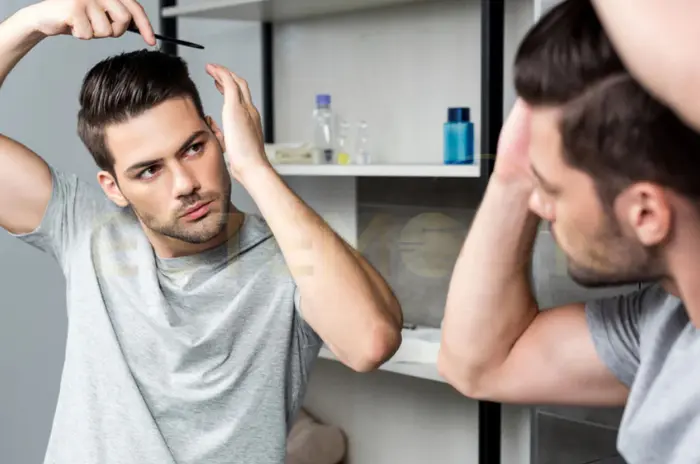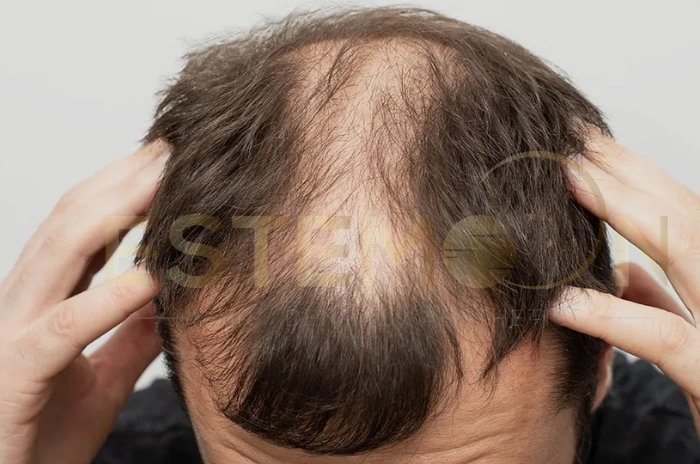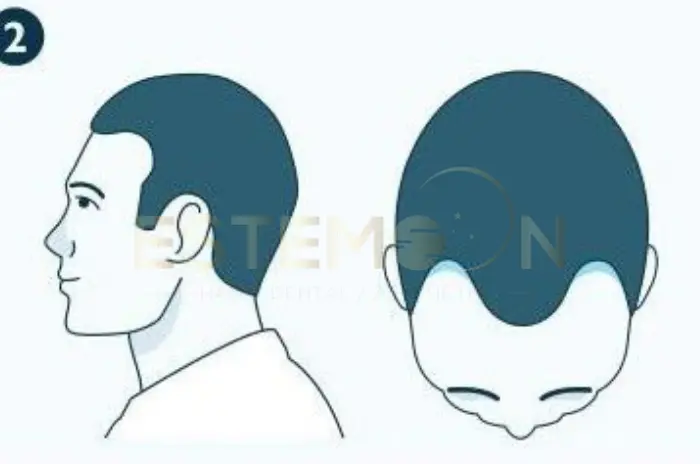Hair loss affects millions of people worldwide, creating a massive market for hair growth products. Unfortunately, this desperation for solutions has led to widespread misleading advertising practices. Companies exploit consumers’ insecurities with false promises and exaggerated claims that prey on emotional vulnerabilities.
The hair growth scams industry generates billions of dollars annually by targeting vulnerable individuals seeking quick fixes. Many advertisements use before-and-after photos that are digitally manipulated or feature models who never experienced hair loss. These deceptive marketing tactics create unrealistic expectations and financial burden.
Understanding how to spot fake hair growth ads is crucial for making informed decisions about your hair health. By learning to identify red flags and understanding the science behind legitimate treatments, you can protect yourself from fraudulent products and potentially harmful substances that may damage your scalp or overall health.
| Red Flags in Hair Growth Ads | Reality Check |
|---|---|
| “Grow hair overnight!” | Hair grows 0.5 inches per month maximum |
| “100% natural, no side effects” | Natural doesn’t mean safe or effective |
| “Guaranteed results for everyone” | No treatment works for 100% of people |
| “Secret formula doctors don’t want you to know” | Legitimate treatments are well-documented |
| “Before/after photos” without timeframes | Often misleading or digitally altered |
| “Clinical studies prove effectiveness” | Studies may be fake or misrepresented |
| “Celebrity endorsed miracle cure” | Paid endorsements without real results |
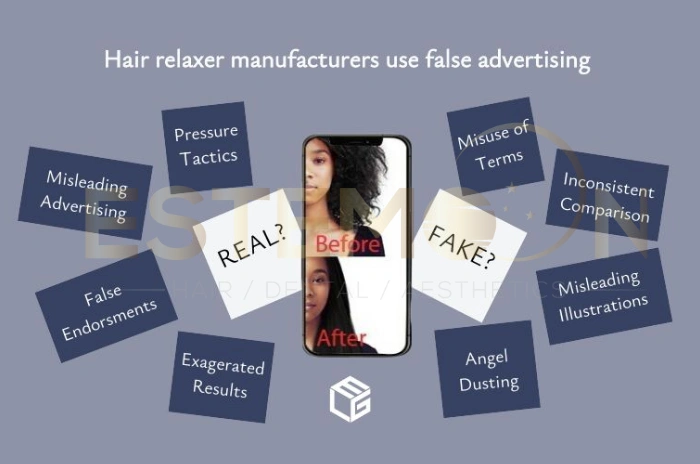
Common False Claims in Hair Growth Ads
Grow Hair Overnight! – Why It’s Impossible
One of the most prevalent false hair product claims involves promises of overnight hair growth. These advertisements often feature dramatic transformations that allegedly occurred within days or weeks. The biological reality is that hair grows at approximately half an inch per month, making instant results scientifically impossible.
The hair growth cycle consists of three distinct phases: anagen (active growth lasting 2-7 years), catagen (transition phase lasting 2-3 weeks), and telogen (resting phase lasting 2-3 months). This natural process cannot be dramatically accelerated through topical treatments or dietary supplements, regardless of marketing claims.
Unregulated hair products exploit consumers’ lack of understanding about hair biology using terms like “revolutionary breakthrough” or “ancient secret formula.” These companies deliberately create confusion about normal hair growth timelines to sell products that cannot deliver promised results. Marketing materials often show models with thick hair claiming transformation in unrealistic timeframes.
100% Natural & Side Effect-Free – The Hidden Truth
Another deceptive practice involves claiming products are completely natural and therefore safe. The term “natural” is not regulated in cosmetics, allowing companies to use it freely regardless of actual ingredients. Many hair growth products contain synthetic ingredients, preservatives, and chemical compounds despite being marketed as natural alternatives.
Even genuinely natural substances can cause adverse reactions, allergic responses, or interact dangerously with medications. Saw palmetto, commonly marketed as a natural DHT blocker, can interfere with blood-thinning medications and hormone therapies. Essential oils like rosemary or peppermint may cause scalp irritation in sensitive individuals.
Legitimate treatments like minoxidil and finasteride have well-documented side effect profiles that reputable manufacturers clearly communicate to consumers. These FDA-approved treatments undergo rigorous testing, unlike many supplements and topical products sold online without proper safety evaluation.
How Companies Trick You into Buying
Deceptive marketing strategies in the hair growth industry are sophisticated and multifaceted. Companies often use testimonials from paid actors or heavily edit genuine customer reviews to highlight only positive experiences. They may also display fake scientific studies or misrepresent legitimate research findings to create false credibility.
Social media platforms have become breeding grounds for hair growth scams. Influencers with large followings promote products without disclosing financial relationships or personal experience with the items. These endorsements appear authentic but are often paid advertisements disguised as personal recommendations, targeting specific demographics through algorithmic advertising.
Limited-time offers and scarcity tactics create artificial urgency to prevent consumers from researching products thoroughly. Phrases like “only 50 bottles left” or “offer expires in 24 hours” pressure people into making impulsive purchases without proper evaluation or consultation with healthcare professionals.
Companies also manipulate before-and-after photos through professional lighting, strategic angles, and digital editing software. They may show the same person with wet, flat hair styled down in the “before” photo and dry, voluminized, professionally styled hair in the “after” image. These visual tricks create illusions of significant hair growth when no actual improvement has occurred.
Another common tactic involves using stock photos or hiring models with naturally thick hair to pose as customers. Some companies even use photos of people with temporary hair loss due to medical treatments, showing their natural regrowth as product results.
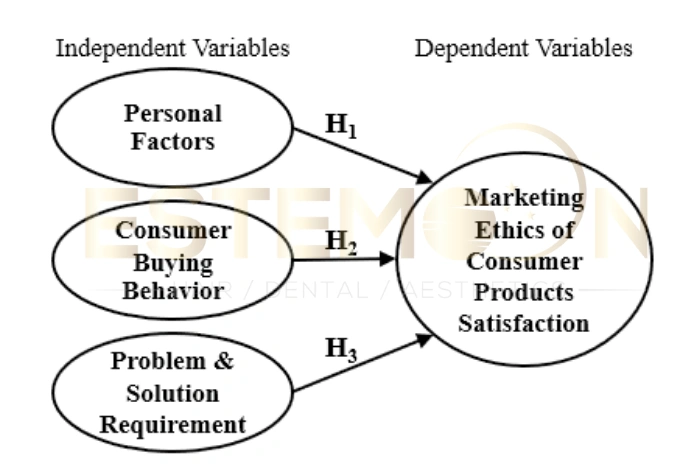
Legal & Ethical Issues in Hair Product Marketing
The Federal Trade Commission regularly takes action against companies making false advertising claims about hair growth products. However, enforcement is challenging due to the volume of misleading advertisements and the international nature of many online retailers operating from countries with different regulatory standards.
Many unregulated hair products are sold as dietary supplements, falling under different regulatory guidelines than pharmaceutical products. This classification allows manufacturers to make structure-function claims without proving efficacy or safety through rigorous clinical trials required for medications.
The ethical implications of misleading hair growth advertising extend beyond financial harm to consumers. People may delay seeking legitimate medical treatment for underlying conditions causing hair loss, such as thyroid disorders, nutritional deficiencies, or autoimmune conditions that require proper diagnosis and treatment.
Class-action lawsuits have been filed against several major companies for false advertising related to hair growth claims. These legal actions have resulted in significant financial settlements but often occur years after consumers have been deceived and potentially harmed by ineffective or dangerous products.
International enforcement remains particularly challenging, as many fraudulent companies operate from jurisdictions with limited consumer protection laws. Online marketplaces struggle to monitor and remove misleading products, allowing scammers to continuously rebrand and relaunch similar products under different names.
What to Do Instead of Trusting Ads
Rather than relying on promotional materials, consumers should research best FDA-approved hair growth products with proven efficacy through clinical trials. The Food and Drug Administration has approved only a limited number of treatments for hair loss, including topical minoxidil for men and women, and oral finasteride specifically for male pattern baldness.
Consulting with dermatologists or trichologists provides access to evidence-based treatment options tailored to individual needs. These healthcare professionals can diagnose the underlying cause of hair loss through proper examination, blood tests, and scalp analysis rather than relying on self-diagnosis from online quizzes.
When evaluating hair growth shampoos or other products, look for peer-reviewed research published in reputable medical journals. Be skeptical of studies funded entirely by the manufacturer or those lacking proper control groups. Independent research conducted by universities or medical institutions provides more reliable information about product efficacy and safety.
Consumer protection hair organizations offer valuable resources for identifying fraudulent products and reporting suspicious advertising practices. The Better Business Bureau, Federal Trade Commission, and Food and Drug Administration maintain complaint systems that help track problematic companies and protect other consumers from similar scams.
Before trying any new treatment, research the company’s history, read reviews from verified customers, and check for any legal actions or warnings from regulatory agencies. Legitimate companies provide transparent information about ingredients, potential side effects, and realistic timelines for results.
FAQs About Misleading Advertising with Hair Growth Products
What are common fake hair claims?
False hair product claims typically include promises of overnight results, 100% success rates, permanent hair restoration, and complete safety without side effects.
Do hair growth products actually work?
Only FDA-approved hair growth products like minoxidil and finasteride have proven efficacy through rigorous clinical trials, while most advertised supplements lack scientific evidence.
Can companies be sued for ads?
Yes, companies can face legal action for false advertising, and the FTC regularly pursues cases against businesses making unsubstantiated claims about hair growth products.
Who should I trust for hair loss?
Trust licensed dermatologists, trichologists, and medical professionals who can provide evidence-based treatments rather than relying on hair growth scams or unregulated online products.
Follow us on social media for updates, tips, and patient success stories:


